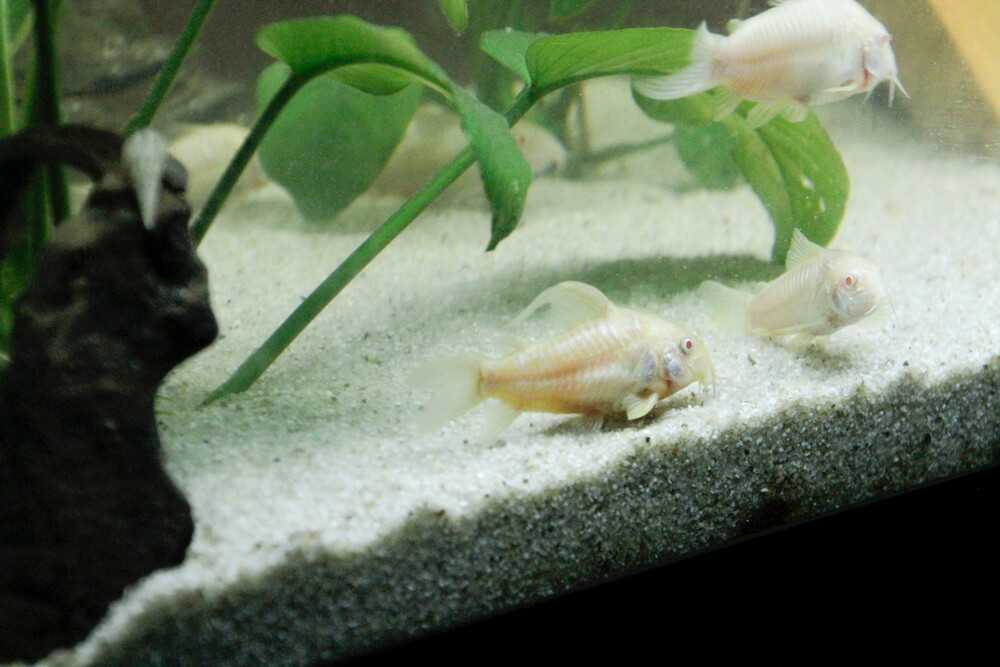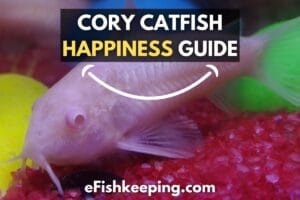Are you curious about whether your cory catfish need bubbles in their tank and whether they prefer water currents? We’ve got you covered!
Read on to explore the breathing process of cory catfish and learn more about their need for air bubblers and water currents.
How Do Cory Catfish Breathe?
Corydoras catfish are known for their ability to utilize a unique respiratory adaptation called aerial respiration. This adaptation allows them to survive in environments with low dissolved oxygen levels, such as shallow pools.
Unlike most fish, Corydoras can extract oxygen from the air through their posterior intestine, allowing them to absorb atmospheric oxygen when necessary.
Cory catfish exhibit air-breathing behavior by swimming to the surface and taking in a gulp of air through their mouth, which is absorbed into the bloodstream in their relevant body parts.
Even when oxygen levels are high, Corydoras catfish have been known to utilize their unique ability to breathe air.
These fish have also been observed to take more than forty breaths from the surface per hour, a behavior that is thought to be influenced by factors such as water depth and meal times.
So the next time you see your Corydoras gulping air from the surface, know that it’s just their way of staying healthy and happy in their underwater home.
Do Cory Catfish Need Bubbler?

Although Cory catfish can breathe air through their posterior intestine, they are not required to do so to survive in a well-oxygenated environment. So, adding an air bubbler or air stone to the tank can help oxygenate the water and create a healthier environment for them.
| Cory Catfish Need Bubbler When: | Cory Catfish Don’t Need Bubbler When: |
| There is no other oxygenating equipment in the tank. | A sponge or other filter in the tank creates water movement and oxygenates the tank. |
| You want to allow more circulation and water movement in the tank. | |
| You want beautiful bubbles to make the tank look more beautiful. |
See Related: Can You Have Too Much Oxygen In The Tank?
An aquarium bubbler, also called as an air stone, is a device that is used to add oxygen to an aquarium.
It consists of a porous stone or ceramic material connected to an air pump, which forces air through the air stone’s pores.
Bubblers produce air bubbles that rise to the water’s surface, increasing water movement and gas exchange between the water and the atmosphere.
Several aquarium bubblers are available, including round or cylindrical and flat stones.
Aquarium bubblers are an important tool for maintaining proper water quality in the tank, as they help to oxygenate the water.
They can also provide additional circulation in the tank, which can help to distribute heat evenly and improve the overall health of the fish.
Circulation in the tank also helps to prevent dead spots in the tank where all the waste gets accumulated and gives rise to algae growth.
Related Read: Do Cory Catfish Eat Algae Wafers?
In addition, the movement of the bubbles can provide visual interest for both the fish and the aquarium hobbyist.
It is important to keep the bubbler clean and properly maintained to ensure it is functioning properly. This may involve replacing the air stone periodically and cleaning the air pump and tubing.
Proper use of an aquarium bubbler can help to create a healthy and enjoyable environment for your fish.
Check out this guide to learn more about aquarium air bubblers and their placement in the tank.
Now, if you already have a sponge filter that generates water surface movement and facilitates oxygen exchange, you won’t need a bubbler.
Similarly, an air bubbler is optional if you already have another filter or similar equipment that generates water surface agitation and oxygenates the tank.
Do Cory Catfish Like Current?
Corydoras catfish do generally prefer water currents in the tank. These fish are native to South America and are found in various habitats, including rivers, streams, and floodplains.
In their natural habitat, Cory catfish are found in shallow, slow-moving rivers and streams. And many riverine fish, including Cory cats, prefer swimming against the water flow, so replicating similar conditions in the tank can provide added benefits.
First, the movement of the water can help to oxygenate the water and improve the overall water quality in the tank. This is especially important for Cory cats, as they are known to be sensitive to poor water quality and may be prone to respiratory problems if the water is stagnant or low in oxygen.
Second, the presence of a water current can help simulate the fish’s natural habitat and provide them with a more enriching environment. This can help to reduce stress and promote healthy behavior in the fish.
While the size of the swimming area in your tank may not change, adding a water current can provide your fish with a more dynamic and stimulating environment.
Swimming against or through moving water can give fish the physical activity they need to maintain healthy growth and development.
So if you want to keep your fish fit and active, consider adding a water current to their tank. It’s a simple way to enhance their overall health and well-being.
Finally, the movement of the water can provide visual interest and stimulation for the fish, which can help to prevent boredom and keep them active and engaged.
Overall, while Cory cats are adaptable and can survive in various environments, they may benefit from the presence of a water current in the tank.
It is important to monitor the water flow in the tank and ensure that it is not too strong or too weak for the fish. A moderate water current is generally optimal for Cory cats.
Handy Tip: As long as they’re not being pushed and pulled all over the place, a little extra flow can be great for these fish. There’s a good chance your Corydoras catfish love the added water current in their tank.
A well-balanced current can be a great addition to your tank, whether it’s for oxygenation, simulation of their natural habitat, or just some added entertainment.
Just keep an eye on the flow and make any necessary adjustments to ensure that your Cory catfish are comfortable and happy.
Read More: How Long Can A Fish Live Without Oxygen, Air Pump, And Filter?
Wrapping Up
Even though cory catfish are known to survive in low-oxygen environments thanks to their special air-breathing technique, it’s still recommended to have an air bubbler to oxygenate the tank and provide them with the right conditions to thrive.
Moreover, air stone (bubbler) comes with many benefits, like water circulation and increasing the overall aesthetics of the tank. They also generate water flow in the tank where cory catfish can play around.
Need more help with Cory Catfish keeping? Check out:
- Cory Catfish Tank Size: A Complete Guide
- How Many Cory Catfish Should Be Kept Together?
- How Long Do Cory Catfish Live? +Tips To Increase Their Lifespan
Reference: ResearchGate
Hi! I’m Praveen Ghoshal, the founder of eFishkeeping.com. Inspired by my Dad, I got interested in fishkeeping when I was a kid. Since then, I have been involved with this hobby. Currently, I have 3 fish tanks at our home, and I enjoy this hobby with my full family. Read more about me here.





![Do Neon Tetras Die Easily? [Here’s The Truth!] do-neon-tetras-die-easily](https://efishkeeping.com/wp-content/uploads/2023/03/do-neon-tetras-die-easily-300x200.jpg)

